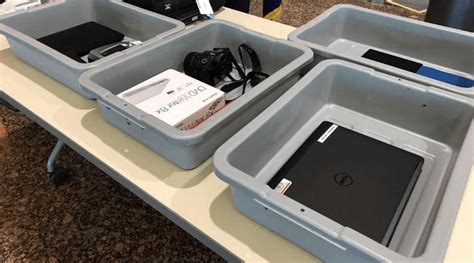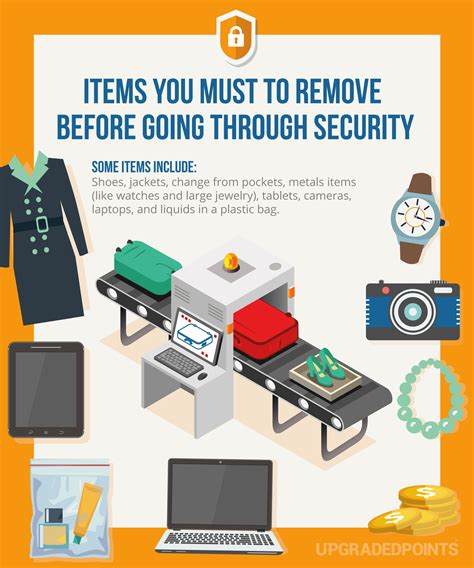
Travelers beware: Experts are warning that smartphones are the most commonly stolen item at airport security checkpoints, urging passengers to keep a close watch on their devices when placing them in TSA bins.
Losing a smartphone, especially while traveling, can be more than just an inconvenience; it can compromise personal data, travel plans, and financial information. Security expert Brooke Watts emphasized the need for heightened vigilance, noting the ease with which thieves can target unattended devices amidst the hustle and bustle of airport security. “Smartphones are prime targets,” Watts explained. “They’re small, valuable, and easily slipped into a pocket or bag while people are distracted.”
Theft at Security Checkpoints: A Growing Concern
The Transportation Security Administration (TSA) checkpoints, designed to ensure passenger safety, paradoxically present opportunities for theft. The process of removing items like laptops, liquids, and phones from bags and placing them in bins can create moments of vulnerability. As passengers navigate metal detectors and repack their belongings, their focus shifts, making it easier for opportunistic thieves to strike.
The increasing reliance on smartphones for travel-related tasks, such as boarding passes, hotel reservations, and navigation, amplifies the impact of theft. Watts points out that the information stored on these devices makes them particularly attractive to criminals. “A stolen phone can provide access to a person’s email, banking apps, social media, and even their identity,” she said.
The problem isn’t necessarily TSA negligence, but rather the environment created by the security process itself. The combination of crowds, distractions, and valuable items in open bins makes for a risky situation. Reports of thefts at security checkpoints have been on the rise, prompting calls for increased awareness and preventative measures.
Why Smartphones Are the Prime Target
Several factors contribute to smartphones being the most frequently stolen items at security:
- High Value: Smartphones are expensive, making them attractive targets for resale. Even older models can fetch a decent price on the secondary market.
- Portability: Their small size allows thieves to easily conceal them.
- Ubiquity: Almost everyone has a smartphone, increasing the opportunities for theft.
- Data Richness: Smartphones contain a wealth of personal and financial information, making them valuable for identity theft and fraud.
- Distraction Factor: The security process itself is distracting, allowing thieves to take advantage of momentarily unattended devices.
“It’s a crime of opportunity,” Watts explains. “Thieves aren’t necessarily targeting specific individuals, but rather looking for easy targets. The chaos of the security line provides the perfect cover.”
Expert Advice: Protecting Your Smartphone at Security
To minimize the risk of smartphone theft at airport security, experts recommend the following precautions:
- Keep Your Phone in Sight: Never let your phone out of your sight. Keep it in your hand or in a secure pocket until you are ready to place it in the bin.
- Wait Until You Are Ready: Don’t place your phone in the bin until you are ready to walk through the metal detector. This minimizes the time it spends unattended.
- Watch the Bin: Keep an eye on the bin as it moves through the security process. If you see anything suspicious, alert a TSA agent.
- Retrieve Immediately: As soon as you pass through the metal detector, retrieve your phone from the bin. Don’t get distracted by repacking other items first.
- Use a Secure Bag: Consider using a bag with a zippered compartment specifically designed for electronics. This adds an extra layer of security.
- Password Protection: Ensure your phone is protected with a strong password or biometric authentication. This prevents unauthorized access if it is stolen.
- Remote Wiping: Enable remote wiping features on your phone. This allows you to erase your data remotely if the phone is lost or stolen.
- Tracking Apps: Install a tracking app on your phone. This can help you locate it if it is lost or stolen.
- Be Aware of Your Surroundings: Pay attention to the people around you. If you see someone acting suspiciously, report it to a TSA agent.
- Travel Light: The more items you have to juggle, the more distracted you will be. Try to minimize the amount of luggage you carry through security.
Watts emphasizes the importance of situational awareness. “The best defense is to be aware of your surroundings and take proactive steps to protect your belongings,” she said.
TSA’s Role and Response
The TSA acknowledges the risk of theft at security checkpoints and encourages passengers to report any incidents immediately. While TSA agents are primarily focused on identifying potential threats, they are also trained to be observant and intervene if they witness suspicious activity.
The TSA website provides information on how to report lost or stolen items at the airport. Passengers can also file a claim for reimbursement if their belongings are stolen. However, the process can be lengthy and there is no guarantee of compensation.
The TSA is continuously evaluating and updating its security procedures to enhance passenger safety and security. This includes exploring new technologies and strategies to deter theft at checkpoints.
The Broader Problem of Airport Theft
While smartphone theft at security checkpoints is a significant concern, it is part of a broader problem of theft at airports. Luggage theft, pickpocketing, and shoplifting are also common occurrences.
Airports are crowded, transient environments, making them attractive to thieves. Passengers are often tired, stressed, and distracted, making them vulnerable targets. The high concentration of valuable items, such as electronics, jewelry, and cash, further increases the risk.
To combat airport theft, authorities are implementing various measures, including:
- Increased Security Patrols: More police officers and security personnel are patrolling airport terminals.
- Surveillance Cameras: Airports are installing more surveillance cameras to monitor activity and deter theft.
- Public Awareness Campaigns: Airports are launching public awareness campaigns to educate passengers about the risks of theft and how to protect their belongings.
- Collaboration with Law Enforcement: Airports are working closely with local law enforcement agencies to investigate and prosecute theft cases.
The Psychological Impact of Theft
Theft can have a significant psychological impact on victims, especially when it occurs during travel. Beyond the financial loss, victims may experience feelings of anger, frustration, and vulnerability.
The loss of a smartphone can be particularly distressing, as it often contains personal photos, contacts, and other irreplaceable data. The fear of identity theft and the potential misuse of personal information can also cause significant anxiety.
To cope with the psychological impact of theft, experts recommend:
- Reporting the incident to the police and the airline or airport authorities.
- Seeking support from friends and family.
- Contacting a mental health professional if the stress is overwhelming.
- Taking steps to protect your identity and financial accounts.
- Learning from the experience and taking precautions to prevent future theft.
The Future of Airport Security
The future of airport security is likely to involve more advanced technology and streamlined processes. Biometric screening, enhanced imaging technology, and automated baggage handling systems could help to reduce congestion and improve security.
These advancements could also help to deter theft by making it more difficult for thieves to operate undetected. However, it is important to remember that technology is not a panacea. Human vigilance and situational awareness will always be essential for preventing theft at airports.
Conclusion: Staying Safe in the Skies
While airport security is designed to protect passengers from threats, it can also create opportunities for theft. By being aware of the risks and taking proactive steps to protect your belongings, you can minimize your chances of becoming a victim. Keep your smartphone in sight, be vigilant, and report any suspicious activity to the authorities. Safe travels!
Frequently Asked Questions (FAQ)
1. What is the most common item stolen at airport security checkpoints?
The most common item stolen at airport security checkpoints is smartphones. Security expert Brooke Watts warns that they are prime targets due to their value, portability, and the wealth of personal data they contain.
2. Why are smartphones so vulnerable to theft at security?
Smartphones are vulnerable due to several factors, including their high value, small size, and the distraction caused by the security screening process. Thieves often take advantage of passengers being focused on removing items from their bags and going through security, making it easier to swipe an unattended phone.
3. What steps can I take to protect my smartphone at airport security?
Several precautions can help protect your smartphone:
- Keep your phone in sight at all times.
- Wait until you’re ready to walk through the metal detector before placing it in the bin.
- Watch the bin as it moves through the security process.
- Retrieve your phone immediately after passing through the metal detector.
- Use a secure bag with a zippered compartment for electronics.
- Ensure your phone is protected with a strong password or biometric authentication.
- Enable remote wiping and tracking features.
- Be aware of your surroundings and report any suspicious activity.
4. What should I do if my smartphone is stolen at airport security?
If your smartphone is stolen, immediately:
- Report the theft to the TSA and airport authorities.
- File a police report.
- Change passwords for all your online accounts.
- Remotely wipe your phone if possible.
- Contact your bank and credit card companies to report any suspicious activity.
- Monitor your credit report for signs of identity theft.
5. Does the TSA take any measures to prevent theft at security checkpoints?
The TSA acknowledges the risk of theft and encourages passengers to report any incidents. While their primary focus is on identifying potential threats, TSA agents are also trained to be observant and intervene if they witness suspicious activity. The TSA website provides information on reporting lost or stolen items. They are also continuously evaluating and updating their security procedures to enhance passenger safety and security and deter theft.
Deep Dive: Analyzing Airport Security Vulnerabilities and Theft Prevention Strategies
Airport security checkpoints, while essential for ensuring passenger safety, present a unique set of vulnerabilities that can be exploited by thieves. The combination of crowded environments, distracted travelers, and valuable personal belongings creates a perfect storm for opportunistic crimes. A deeper analysis of these vulnerabilities and the implementation of comprehensive prevention strategies is crucial for mitigating the risk of theft.
Understanding the Vulnerabilities:
The security screening process inherently introduces several vulnerabilities:
- Disruption of Routine: Travelers are forced to deviate from their normal routines, removing items from their bags and placing them in bins. This disruption can lead to momentary lapses in attention, creating opportunities for thieves.
- Physical Separation: Passengers are often physically separated from their belongings as items move through the conveyor belt. This separation can last for several seconds or even minutes, depending on the length of the line and the efficiency of the screening process.
- Focus Shift: The security process requires passengers to focus on complying with TSA regulations, such as removing shoes and belts. This shift in focus can distract them from monitoring their belongings.
- Crowded Conditions: Airport security checkpoints are often crowded, making it difficult to keep track of belongings and identify suspicious individuals.
- Time Pressure: Travelers are often under time pressure to make their flights, which can lead to rushed decisions and a lack of attention to detail.
Comprehensive Prevention Strategies:
Addressing these vulnerabilities requires a multi-faceted approach involving enhanced technology, improved procedures, increased awareness, and proactive traveler behavior.
-
Enhanced Technology:
- Advanced Imaging Technology (AIT): AIT scanners can reduce the need for pat-downs, minimizing physical contact and potential for theft.
- Automated Screening Lanes: Automated screening lanes can streamline the screening process, reducing congestion and minimizing the time passengers are separated from their belongings. These lanes often include features such as automatic bin return and integrated video monitoring.
- Smart Baggage Systems: Smart baggage systems use RFID (Radio-Frequency Identification) technology to track baggage in real-time, reducing the risk of loss and theft.
- Video Surveillance: Increased video surveillance coverage, particularly in high-risk areas such as security checkpoints and baggage claim areas, can deter theft and aid in investigations.
-
Improved Procedures:
- Clear and Consistent Communication: Clear and consistent communication from TSA agents can help passengers understand the security procedures and reduce confusion and stress.
- Efficient Staffing: Adequate staffing levels can ensure that security lines move efficiently and that TSA agents are able to monitor passenger behavior and identify suspicious activity.
- Revised Bin Handling Procedures: Implementing procedures to ensure bins are closely monitored and quickly returned to passengers can reduce the risk of theft. This could involve assigning TSA agents to specifically monitor bin movement.
- Designated Repacking Areas: Creating designated repacking areas away from the main security line can provide passengers with a less congested and more secure space to repack their belongings.
-
Increased Awareness:
- Public Awareness Campaigns: Launching public awareness campaigns to educate passengers about the risks of theft and how to protect their belongings is crucial. These campaigns can utilize various channels, such as airport signage, social media, and in-flight announcements.
- Educational Materials: Providing educational materials at security checkpoints, such as brochures or posters, can remind passengers to be vigilant and take precautions.
- Security Alerts: Issuing security alerts about specific theft trends or incidents can help passengers stay informed and take extra precautions.
-
Proactive Traveler Behavior:
- Preparation: Preparing for the security screening process in advance by removing items from pockets and organizing belongings can reduce stress and distraction.
- Vigilance: Being vigilant and aware of surroundings can help passengers identify suspicious behavior and protect their belongings.
- Secure Packing: Using secure bags with zippered compartments for valuable items can deter theft.
- Inventory: Taking an inventory of valuable items before traveling can help passengers identify any losses and report them promptly.
- Reporting: Reporting any suspicious activity or incidents of theft to the TSA or airport authorities is essential.
The Role of Technology in Enhancing Security and Preventing Theft:
Technology plays a crucial role in enhancing airport security and preventing theft. Advanced imaging technology, automated screening lanes, and smart baggage systems can streamline the screening process, reduce congestion, and improve security.
- Biometric Screening: Biometric screening technology, such as facial recognition and fingerprint scanning, can enhance security by verifying passenger identities and preventing unauthorized access.
- Artificial Intelligence (AI): AI can be used to analyze video surveillance footage and identify suspicious behavior in real-time, allowing security personnel to respond quickly to potential threats.
- Internet of Things (IoT): IoT devices, such as smart sensors and wearable technology, can be used to track baggage and monitor passenger movement, enhancing security and preventing theft.
- Blockchain Technology: Blockchain technology can be used to create a secure and transparent record of baggage handling, reducing the risk of loss and theft.
The Importance of Collaboration and Information Sharing:
Effective airport security and theft prevention require collaboration and information sharing among various stakeholders, including the TSA, airport authorities, airlines, law enforcement agencies, and passengers.
- Information Sharing: Sharing information about theft trends and incidents can help identify patterns and develop targeted prevention strategies.
- Joint Training Exercises: Conducting joint training exercises involving all stakeholders can improve coordination and communication in the event of a security incident.
- Public-Private Partnerships: Establishing public-private partnerships can leverage the expertise and resources of both government and private sector organizations to enhance airport security and prevent theft.
The Ethical Considerations of Airport Security:
While enhancing airport security is essential, it is also important to consider the ethical implications of security measures. Balancing security with privacy, civil liberties, and passenger convenience is a challenging but necessary task.
- Privacy Concerns: Biometric screening and other advanced technologies raise privacy concerns about the collection and storage of personal data.
- Civil Liberties: Security measures such as pat-downs and searches can infringe on civil liberties.
- Discrimination: Security measures should be implemented fairly and without discrimination.
The Future of Airport Security and Theft Prevention:
The future of airport security and theft prevention is likely to involve a greater reliance on technology, data analytics, and collaboration. As technology continues to evolve, new and innovative solutions will emerge to address the challenges of airport security and theft prevention.
- Predictive Analytics: Predictive analytics can be used to identify high-risk passengers and areas, allowing security personnel to focus their resources on the most vulnerable areas.
- Robotics: Robotics can be used to automate tasks such as baggage handling and security screening, reducing the need for human intervention and improving efficiency.
- Virtual Reality (VR): VR can be used to train security personnel in realistic scenarios, improving their ability to respond to security incidents.
By embracing these advancements and implementing comprehensive prevention strategies, airports can create a safer and more secure environment for travelers. However, it is crucial to remember that technology is only one part of the solution. Human vigilance, collaboration, and a commitment to ethical practices are also essential for ensuring effective airport security and preventing theft.






